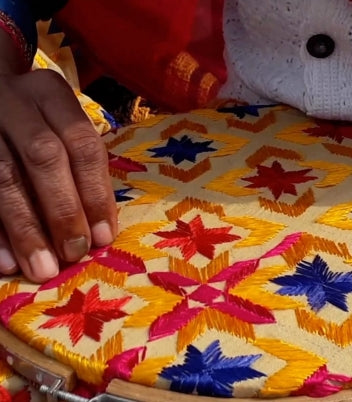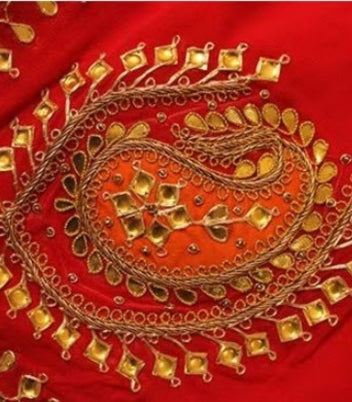
Famous Indian Embroidery Styles You Must Know
Embroidery styles are one of the highlights of Indian artistic traditions. The old Indian fashion comprises such a huge variety of fabrics, threads, stitches, and motifs that a person interested in it would simply be left awestruck in the end.
Some of the popular Indian Embroidery Styles Are:
Hailing from the city of Tehzeeb and Nazaquat, Chikankari is a delicate and intricate embroidery style that originated in the Mughal era. Introduced by Nur Jahan, the wife of Mughal emperor Jahangir, this art involves block printing specific patterns on the fabric, followed by skilled craftsmen embroidering stitches along with the pattern. The final touch involves washing the fabric to remove traces of the print, leaving behind a masterpiece of elegance.
Beyond the fields of Sarson da Saag and the aroma of Makki di Roti, Punjab is renowned for its Phulkari embroidery. Stitches are skilfully embroidered on the back of the cloth, creating a vibrant design on the front. The vivid contrast of colourful stitches against a subtle background gives Phulkari its distinctive and outstanding appearance, reflecting the spirit of Punjab.
In the harsh winters of Kashmir, where farming was challenging, Kashida embroidery became a livelihood for the locals. Mainly practiced on fabrics like wool and silk, craftsmen stitch beautiful scenes inspired by nature. Rather than focusing on animals or human figures, Kashmiri embroidery captures the essence of the breathtaking landscapes and the serenity of the region.
This set combines the elegance of sequins with the comfort of birch fabric. The intricate sequin work adds a touch of sophistication, while the fabric ensures a relaxed and comfortable fit. The top adds a touch of shimmer, while the flowy silhouette flatters all body types.
Zardozi, an embroidery style transcending regional boundaries, has roots dating back to the time of Rigveda. Craftsmen meticulously fill elaborate designs with gold and silver threads, elevating the magnificence with the addition of pearls and precious stones. Though originally crafted with scarce metals, modern adaptations use copper wire with gold and silver finishes to replicate the opulence of this timeless art.
Originating in Orissa and West Bengal, Kantha embroidery stands out for its simplicity and rural charm. Typically practiced by rural women, this traditional style involves a simple running stitch along the sides of soft dhotis and sarees. The uncomplicated beauty of Kantha is a testament to the artistry thriving in the heart of rural India.
Iranian travellers brought this art to India during the 17th century, and it was originally done with mica and silver coins. Women artisans in Kutch and parts of Rajasthan are renowned for their mastery in mirror work, transforming fabric into a canvas of shimmering reflections. The allure of Shisha Embroidery is omnipresent, gracing traditional ensembles like ghagras and blouses as well as finding a place on contemporary pieces such as dupattas, denim jackets, and jeans. The reflective brilliance of the mirrors, meticulously embedded into the fabric, adds a festive sparkle in your celebrations.
Indian embroidery styles are not merely stitches on fabric; they are living testaments to the rich cultural heritage and artistic prowess of the nation. From the delicate Chikankari of Lucknow to the opulent Zardozi transcending time, each style weaves a story that adds to the vibrant tapestry of Indian fashion. Embrace the threads of tradition, and let your wardrobe tell the tales of centuries past.














